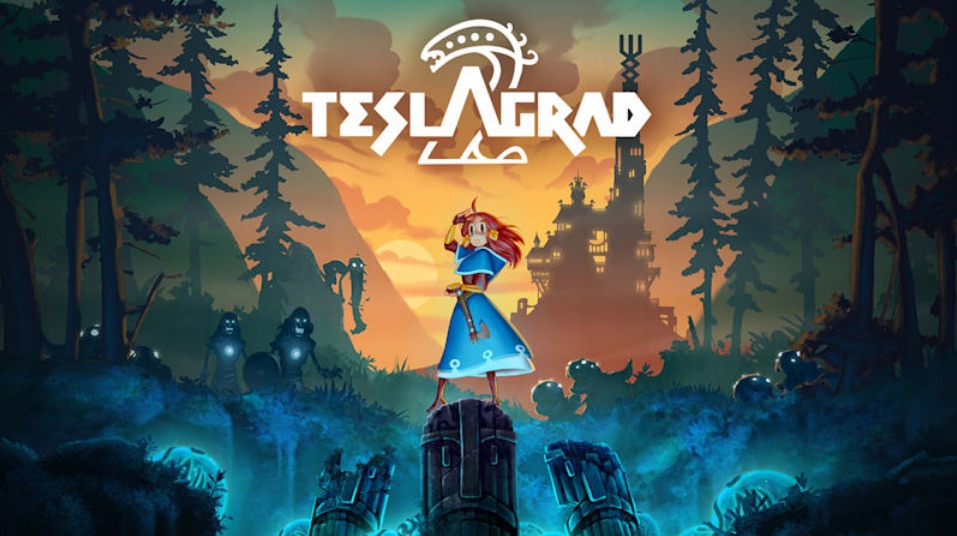
The original Teslagrad was a physics-based action platformer that was pretty laid back and had a lot of style. The scenario was expressed with visuals and a dense atmosphere to convey the story, making it immersive. The graphics were illustrative and made extensive use of expressive 2D art.
The main gimmick behind Teslagrad was how a gamer could harness the power of electromagnetism and how it could be used for clever puzzles and platforming. It was a straightforward 2D platformer that pushed gamers to be creative with the electrical powers at their command.
Teslagrad was a humble little game. A sequel would allow the developers to attempt something much more ambitious. The original title was from 2013, and the boys at Rain Games have refined their talents by developing three other games since then. How does this sequel build upon the electromagnetic shenanigans? Find out in this Teslagrad 2 review!
Teslagrad 2
Developer: Rain Games
Publisher: Modus Games
Platforms: Windows PC, Nintendo Switch, Xbox One, Xbox Series X|S, PlayStation 4, PlayStation 5 (reviewed)
Release Date: April 19, 2023
Players: 1
Price: $19.99 USD

If there is one thing that Teslagrad 2 does very well, it is conveying a story through visuals. The premise of this game is very simple; anyone can understand it and it is done without any spoken dialogue or text. There is a lot of subtext in the story that gamers can speculate and debate, and there is never a moment where scenes are bogged down with tedious exposition.
The cryptic nature of the narrative is so vague that it would be easy to assume that the female protagonist doesn’t have a name, but she does. Her name (Lumina) and other details like the name of the setting are never actually explained in the game. Players will have to seek out a Wiki or Steam page to find that out. Not that it matters much because the narrative is gripping that most gamers won’t care.
Teslagrad 2 makes a case for details like names or exposition being ultimately meaningless. Ironically, the sheer lack of information makes the moments where players do stumble upon significant lore more meaningful. The sensory deprivation makes players consider every aspect on a deeper level- as if they are a ravenous dog, desperately chomping on a bone for any scrap of meat to absorb.
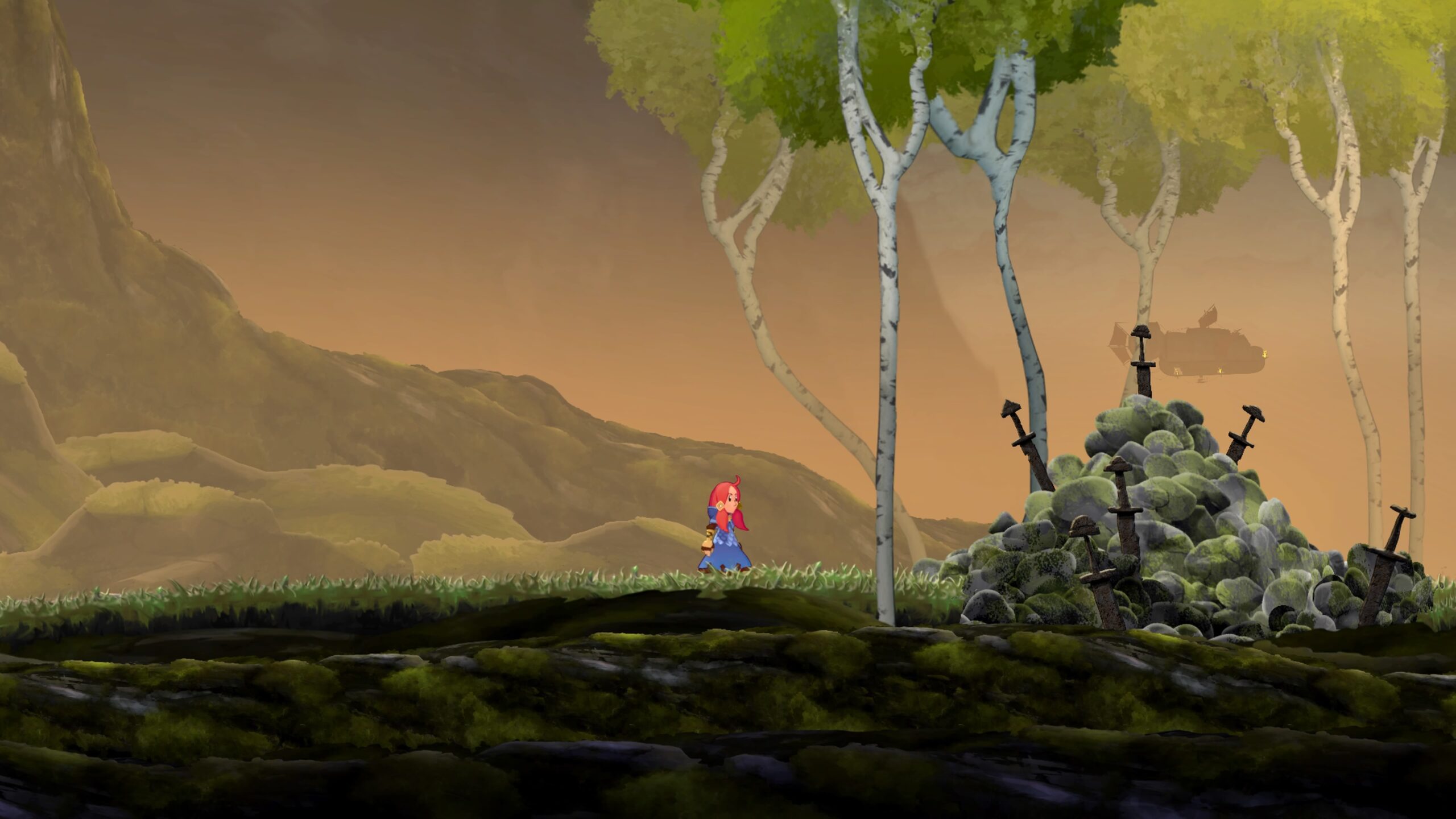
The world and scenario of Teslagrad 2 are masterfully executed. It begins with Lumina piloting a rinky-dink airship amidst a terrible thunderstorm. Suddenly, she is besieged by a flying Viking longship festooned with marauding Scandinavian barbarians.
Lumina’s wimpy vessel is shot down. She survives the crash and finds herself in a treacherous land known as Wyrmheim; a terrible fjordside kingdom where man stole from the Gods. This was a place where the Northmen harnessed electromagnetism and Lumina will have to learn how to master the technology if she hopes to survive the encounter with the sky Vikings, as well as the ghosts of Wyrmheim.
The entirety of Wyrmheim is one large seamless map with no load times. Teslagrad 2 aims to be more of a “metroidvania” than its predecessor and Lumina will need to acquire abilities endowed upon her from the phantoms of Wyrmheim’s engineers.
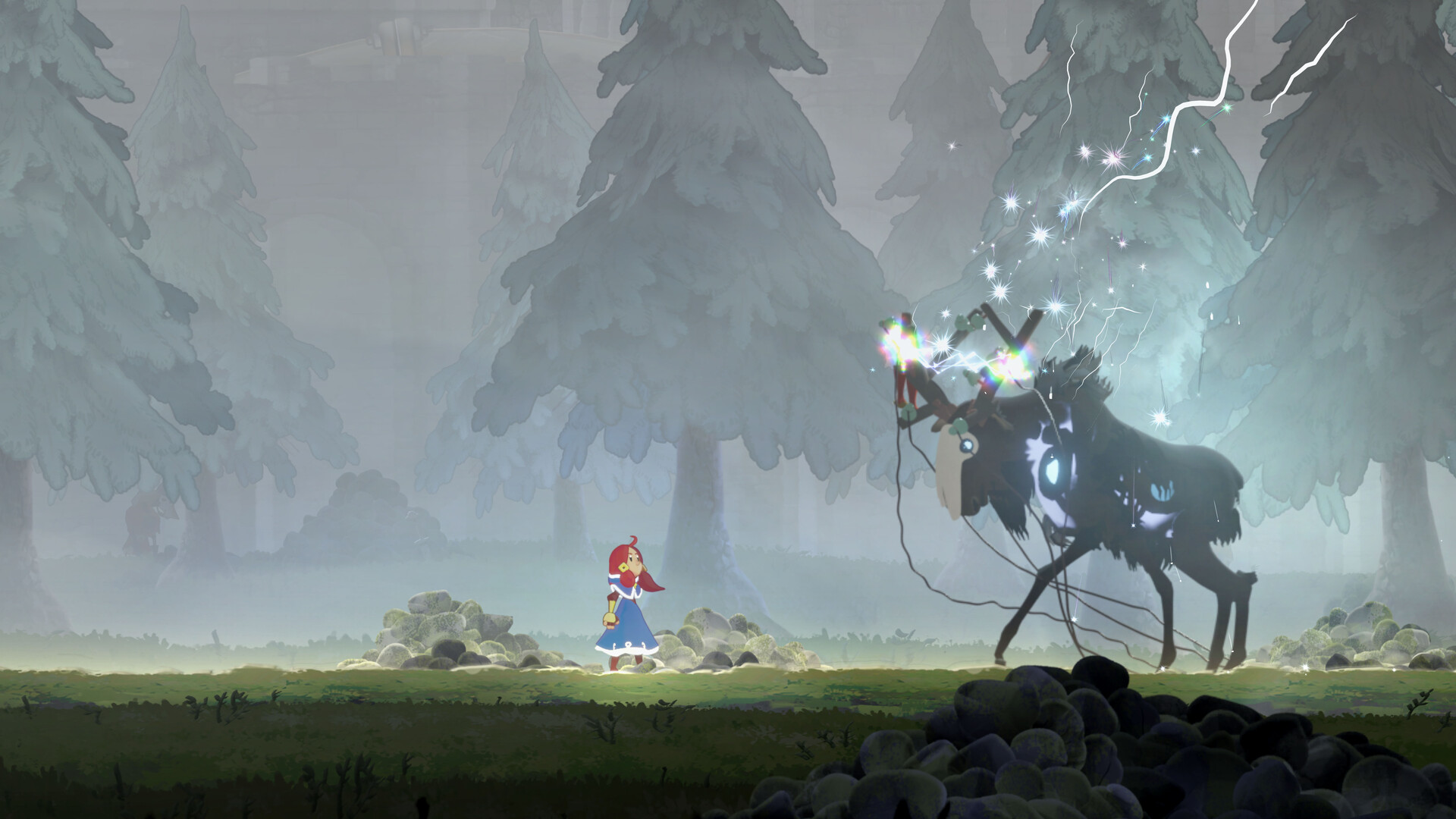
Lumina’s core abilities are teleportation, magnetism, and electric sliding. There are a few other abilities like her dive-bomb, the magnet axe, and a few optional hidden moves like a double-jump, but her three core moves are what most of Teslagrad 2 depends on.
The obstacles, traps, and level design will put players to task to master these abilities; sometimes demanding them to juggle them all at once. The mechanics of these powers are flexible since they rely on a weighty physics system that gamers will have to adjust to progress. Lumina will be thrown around with magnet polarity, be converted into pure energy, and can even be launched like a missile from a rail gun.
Catching rides on magnetic beams at the wrong angle can send the protagonist into a wall of spikes if gamers are careless. Teslagrad 2 requires some finesse in some instances and while the physics can sometimes feel a bit finicky but there is never a challenge that feels overly difficult. At worst, the teleportation dash does feel like the cool-down takes a little too long before it can be used again.

Most of Teslagrad 2 is seemingly systemic and rarely depends on hard-coded scripting. Lumina’s range of movement is physics-based and with a little creativity, players can gain momentum to reach areas in multiple ways. This may be true for the big and wide open areas in the valley- the game can present some extremely focused gauntlets of puzzle platforming.
There is almost no combat in Teslagrad 2. There are enemies and even a few bosses, but they are mostly used for story-telling purposes or to put gamers to the test of mastering Lumina’s moves. Bosses are more like puzzles that can kill and since there are so few actual battles, the game is thoughtfully balanced around this.
Outside of a one-hit protection barrier, Lumina can only take one blow before she is down for the count, giving her a maximum of two hits. Bosses will follow a pattern that intensifies and follow a three-hit rule, apart from the final boss which gets a bonus fourth hit. This keeps the battles brief, and memorable, but still quite challenging.
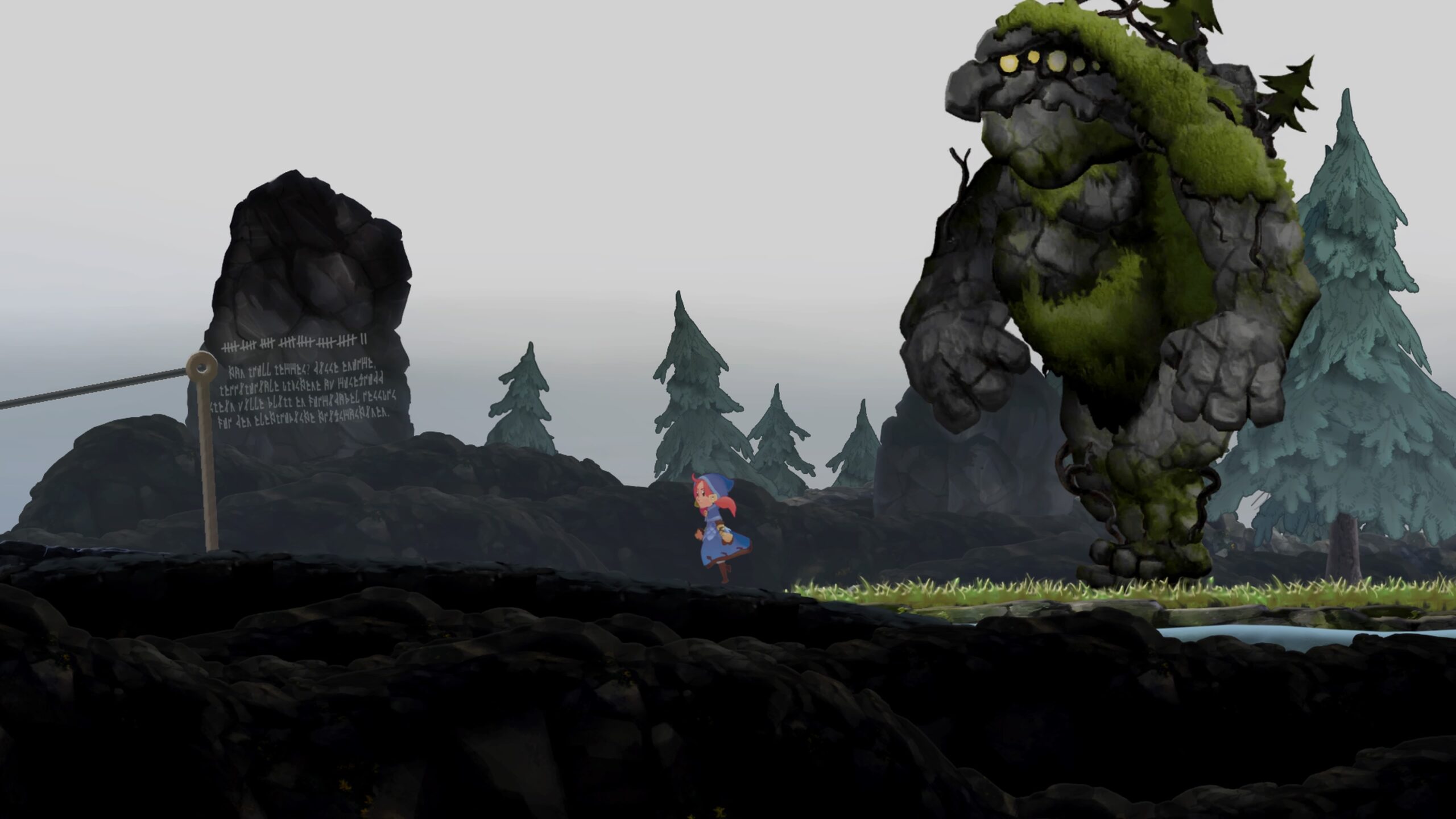
Teslagrad 2 has a very unique look to its art style that seems like it is very personal and distinct to the artist who designed everything. It has some cartoony elements like characters having only four fingers on each hand, exaggerated silhouettes, and color schemes to make each one stand out.
Environments are lush and combine 2D and 3D elements that playfully accentuate perspective. The foreground and background are specially embellished to create a sense of depth to the setting, which is fitting since Teslagrad 2 is set in a valley. The effect makes the world feel convincing and gives it a lot of personality and resembles the level of craftmanship seen in Vanillaware games.

Teslagrad 2 is an impressive and creative take on the “metroidvania” format. It makes a case for combat being filler in a genre that is bloated with difficult games. The only area where Teslagrad 2 falters is its aggressive crusade for minimalism can make the experience run thin.
Wyrmheim is large and full of secrets and hidden areas, but most of them only reward the player’s efforts with a tarot card that gives a vague hint of the story. There are a lot of these- over 80 of them and it seems wasteful to have so many of these challenges not be implemented into the main path to the end or have a substantial reward.
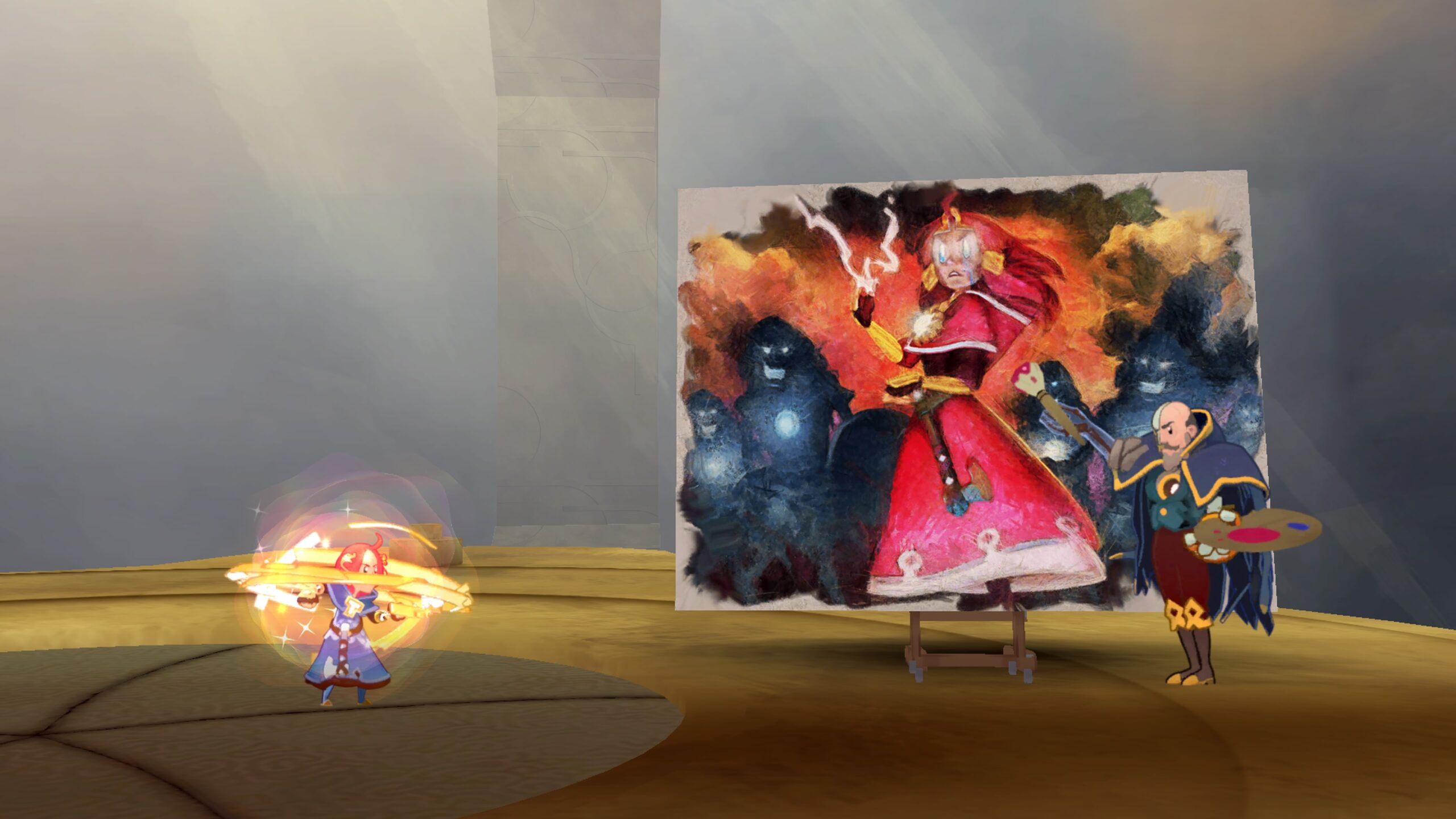
The best reward that Teslagrad 2 can offer is the hidden bonus abilities, but there are so few of them and they are acquired late. This is also a very short game if players don’t try to seek out the hidden collectibles. Only focusing on the main path and playing casually can lead Lumina to the end in under three hours.
Due to the minimalistic design, there is not much replay value after beating the game. Picking up all the collectibles and getting to the end only makes the world feel more empty. Being a “metroidvania” almost sabotages it since that sets up false expectations. A better way to look at it is to consider it an open-world version of the kinds of games that Limbo or Inside aspires to be.
An inquisitive player who explores and tries some of the optional objectives will find that Teslagrad 2 is excellently paced. It rarely has a dull moment and is an artistic achievement with striking visuals that stay with you and challenges that push your reflexes.
Teslagrad 2 was reviewed on PlayStation 5 using a copy provided by Modus Games. Additional information about Niche Gamer’s review/ethics policy can be found here. Teslagrad 2 is now available for Windows PC (via Steam), Nintendo Switch, PlayStation 4, PlayStation 5, Xbox One, and Xbox Series X|S.